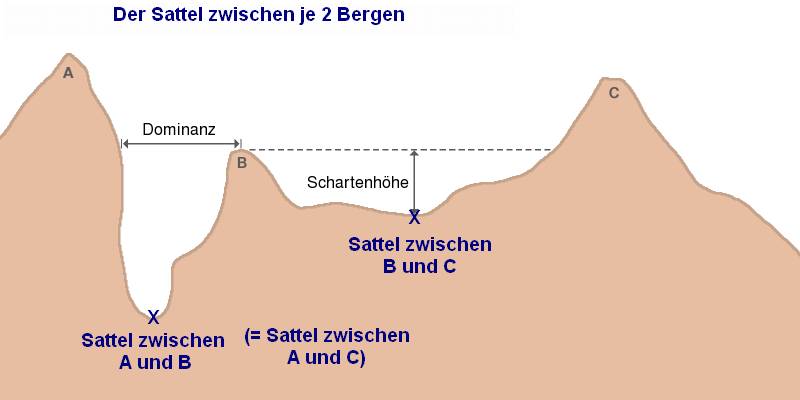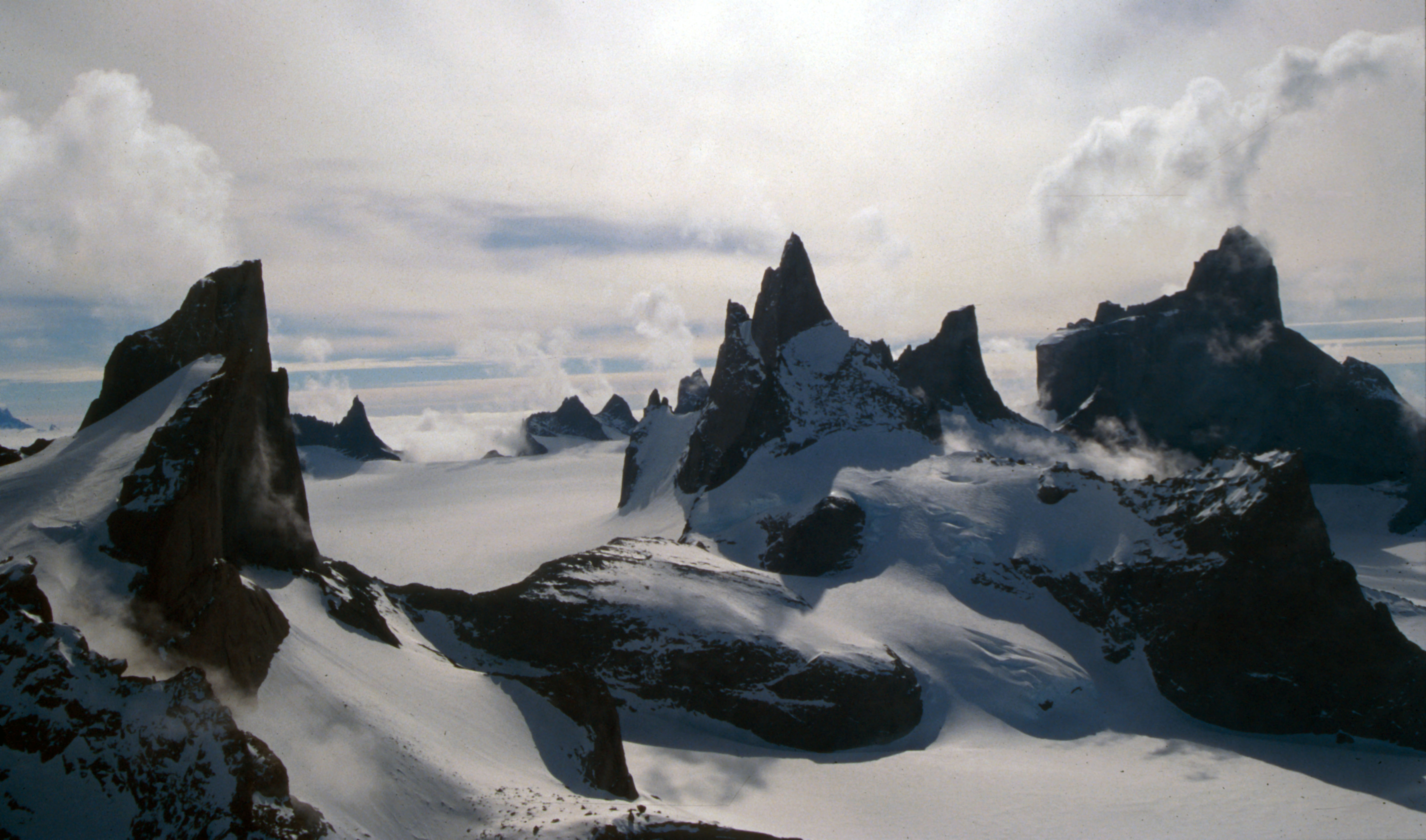|
Djupedalsleitet Saddle
Djupedalsleitet Saddle () is an ice saddle between the head of Djupedalen Valley and Snuggerud Glacier, south of the Filchner Mountains in Queen Maud Land. It was mapped and name by Norwegian cartographers from surveys and air photos by the Sixth Norwegian Antarctic Expedition The sixth Norwegian Antarctic Expedition (''Den norske antarktisekspedisjonen'') was a scientific expedition to Queen Maud Land in Antarctica. The expedition was based at Norway Station () which was located on the Fimbul Ice Shelf bordering the coa ... (1956–60). References Mountain passes of Queen Maud Land Princess Astrid Coast {{PrincessAstridCoast-geo-stub ... [...More Info...] [...Related Items...] OR: [Wikipedia] [Google] [Baidu] |
Saddle (landform)
The saddle between two hills or mountains is the region surrounding the saddle point, the lowest point on the line tracing the drainage divide (the col) connecting the peaks. When, and if, the saddle is navigable, even if only on foot, the saddle of a (optimal) pass between the two massifs, is the area generally found around the lowest route on which one could pass between the two summits, which includes that point which is a mathematically when graphed a relative high along one axis, and a relative low in the perpendicular axis, simultaneously; that point being by definition the col of the saddle. Topography A saddle is the lowest area between two highlands (prominences or peaks) which has two wings which span the divide (the line between the two prominences) by crossing the divide at an angle, and, so is concurrently the local highpoint of the land surface which falls off in the lower direction. That is, the drainage divide is a ridge along the high point of the saddle, as ... [...More Info...] [...Related Items...] OR: [Wikipedia] [Google] [Baidu] |
Djupedalen Valley
Djupedalen Valley () is a glacier-filled valley separating the Mühlig-Hofmann Mountains and the Filchner Mountains in Queen Maud Land. It was plotted from surveys and air photos by the Sixth Norwegian Antarctic Expedition (1956–60) and named Djupedalen (the deep valley). See also *Djupedalsleitet Saddle Djupedalsleitet Saddle () is an ice saddle between the head of Djupedalen Valley and Snuggerud Glacier, south of the Filchner Mountains in Queen Maud Land. It was mapped and name by Norwegian cartographers from surveys and air photos by the Sixth ... References Valleys of Queen Maud Land Princess Astrid Coast {{PrincessAstridCoast-geo-stub ... [...More Info...] [...Related Items...] OR: [Wikipedia] [Google] [Baidu] |
Snuggerud Glacier
Snuggerud Glacier () is a glacier flowing north-northeast between Klevekapa Mountain and Smaknoltane Peaks in the Filchner Mountains of Queen Maud Land. Mapped by Norwegian cartographers from surveys and air photos by the Norwegian Antarctic Expedition (1956–60) and named for J. Snuggerud, radio mechanic with Norwegian Antarctic Expedition (1956–58). See also * Djupedalsleitet Saddle * List of glaciers in the Antarctic There are many glaciers in the Antarctic. This set of lists does not include ice sheets, ice caps or ice fields, such as the Antarctic ice sheet, but includes glacial features that are defined by their flow, rather than general bodies of ice. Th ... * Glaciology References * Glaciers of Queen Maud Land Princess Astrid Coast {{PrincessAstridCoast-glacier-stub ... [...More Info...] [...Related Items...] OR: [Wikipedia] [Google] [Baidu] |
Filchner Mountains
The Filchner Mountains (german: Filchnerberge) are a group of mountains southwest of the Drygalski Mountains, at the western end of the Orvin Mountains of Queen Maud Land, Antarctica. They were discovered by the Third German Antarctic Expedition (1938–1939), led by Capt. Alfred Ritscher, and named for Wilhelm Filchner, leader of the German expedition to the Weddell Sea area in 1911–12. They were remapped from air photos taken by the Sixth Norwegian Antarctic Expedition, 1958–59. See also * Djupedalsleitet Saddle * List of mountains of Queen Maud Land This list of mountains of Queen Maud Land contains mountains with a registered elevation of higher than 2000 metres (6561 feet) above sea level. The availability of accurate data for this region is limited, making the list both incomplete and inac ... * Kubusdaelda * Kubusdalen References Mountain ranges of Queen Maud Land Orvin Mountains {{PrincessAstridCoast-geo-stub ... [...More Info...] [...Related Items...] OR: [Wikipedia] [Google] [Baidu] |
Queen Maud Land
Queen Maud Land ( no, Dronning Maud Land) is a roughly region of Antarctica claimed by Norway as a dependent territory. It borders the claimed British Antarctic Territory 20° west and the Australian Antarctic Territory 45° east. In addition, a small unclaimed area from 1939 was annexed in June 2015. Positioned in East Antarctica, it makes out about one-fifth of the continent, and is named after the Norwegian queen Maud of Wales (1869–1938). In 1930, the Norwegian Hjalmar Riiser-Larsen was the first person known to have set foot in the territory. On 14 January 1939, the territory was claimed by Norway. On 23 June 1961, Queen Maud Land became part of the Antarctic Treaty System, making it a demilitarised zone. It is one of two Antarctic claims made by Norway, the other being Peter I Island. They are administered by the Polar Affairs Department of the Norwegian Ministry of Justice and Public Security in Oslo. Most of the territory is covered by the east Antarctic ic ... [...More Info...] [...Related Items...] OR: [Wikipedia] [Google] [Baidu] |
Sixth Norwegian Antarctic Expedition
The sixth Norwegian Antarctic Expedition (''Den norske antarktisekspedisjonen'') was a scientific expedition to Queen Maud Land in Antarctica. The expedition was based at Norway Station () which was located on the Fimbul Ice Shelf bordering the coast of Queen Maud Land. The expedition carried out survey work and scientific studies over a period of three-four years (1956–1960). The expedition was intended as part of Norway's participation in the International Geophysical Year, 1957-58. The crew set sail from Oslo on board two whaling ships, the ''Polarsirkel'' and ''Polarbjørn'', on 10 November 1956. The expedition was led by Sigurd Gunnarson Helle, a geodesist at Norsk Polarinstitutt. It included a total crew of fourteen researchers which was reduced to nine during the third year. Among their activities were topological mapping of the region. In 1960, King Olav V of Norway instituted the Antarctic Medal The Antarctic Medal is a civil decoration of Norway. Established by ... [...More Info...] [...Related Items...] OR: [Wikipedia] [Google] [Baidu] |
Mountain Passes Of Queen Maud Land
A mountain is an elevated portion of the Earth's crust, generally with steep sides that show significant exposed bedrock. Although definitions vary, a mountain may differ from a plateau in having a limited summit area, and is usually higher than a hill, typically rising at least 300 metres (1,000 feet) above the surrounding land. A few mountains are isolated summits, but most occur in mountain ranges. Mountains are formed through tectonic forces, erosion, or volcanism, which act on time scales of up to tens of millions of years. Once mountain building ceases, mountains are slowly leveled through the action of weathering, through slumping and other forms of mass wasting, as well as through erosion by rivers and glaciers. High elevations on mountains produce colder climates than at sea level at similar latitude. These colder climates strongly affect the ecosystems of mountains: different elevations have different plants and animals. Because of the less hospitable terrain and ... [...More Info...] [...Related Items...] OR: [Wikipedia] [Google] [Baidu] |


